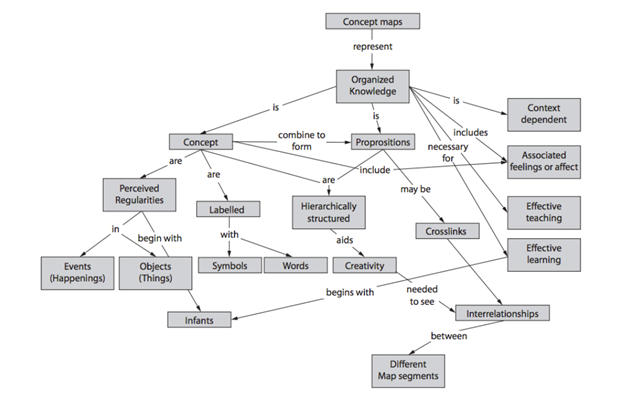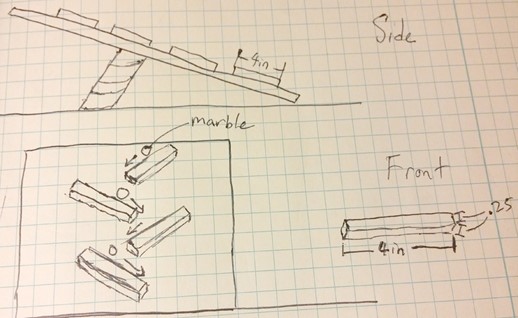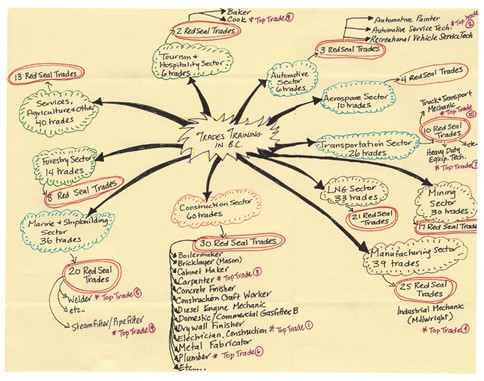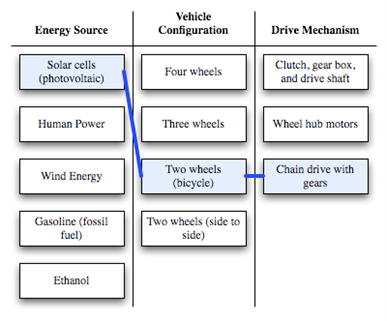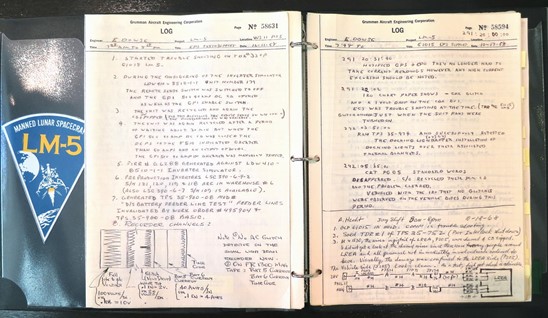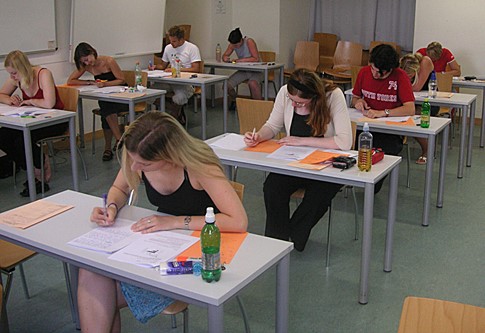Click play on the following audio player to listen along as you read this section.

A BCcampus element has been excluded from this version of the text. You can view it online here: https://opentextbc.ca/tradescommoncoreb1/?p=35
Understanding how you learn is important for developing effective study skills. Your past learning experiences and study habits are the starting point for your new learning experience. Effective study habits can be learned, and through repetition they will become part of your daily routine, both in your current studies and for lifelong learning.

Figure 1.1 Developing effective study skills is beneficial to lifelong learning.
A typical apprenticeship program will consist of approximately 30 hours of class time each week for a period of six to eight consecutive weeks. Foundation or entry-level pre-apprenticeship programs, in which the training provider provides practical shop-based training as well as theory, can be up to several months in length, split between the classroom learning theory and hands-on experience in the shop. For individuals who have been employed full time in the workforce, this schedule may appear to leave a lot of free time. However, for each hour of class time, you will be expected to spend at least an additional hour reading, completing assignments and projects, studying for tests, and preparing for the next day’s class. If you have not developed effective study habits, you may need to dedicate even more time to these activities.
Your program of study can also be taught or delivered in a variety of modes, from cohort-based, in which everyone in the class moves in lockstep from one topic to the next, to self-directed, where everyone is working on their own. A number of trades programs also offer some form of online or computer-based learning component. Understanding how your program will be delivered will play a role in determining the most effective ways in which you will study.
A learner is an individual who acquires knowledge or skills through experience or study, or by being taught. The following are some of the steps that you can take to prepare yourself to become an effective learner
- Make learning your first priority. This requires a conscious effort on your part to look at all of the activities that you are engaged in and assess whether you can continue to participate in all of them and attend school full time for the duration of your program. Attendance is mandatory in trades programs. You may need to decide whether you need to cut back on other commitments outside your program of study or try to schedule these activities prior to starting your program or upon completion.
- Develop and maintain a strong support network. Your decision to study can have a significant effect on relationships with your family and friends. Their support and understanding of your studies and the commitments you will need to make will play a role in your success. Discuss your program of study and schedule with your family and friends so that you can maintain a supportive environment. Reduced work during your studies can also have financial implications for you and your family and planning ahead and discussing potential consequences can reduce stress and conflict. You may also be required to move to another city to complete your studies, which can present a host of challenges for you and your relationships if you don’t discuss the situation ahead of time.
The individuals you will meet in your studies can also be an important source of support, as you will be sharing the same learning experience and they will understand your workload and the associated pressures. The relationships you form during your studies can greatly enhance your learning and may lead to long-lasting friendships. As fellow students you may share information about classes, assignments, and problems. You may form study groups in order to stay motivated and on top of your workload. You may also be able to share strengths with one another and exchange informal tutoring in areas where you need additional assistance.
If you have a documented disability and are eligible for services and educational accommodations, you will need to be proactive. Establishing the support services you will need at the training institution should be a high priority. It is very important to get in touch with the unit responsible for assisting you as soon as possible. You may have paperwork to complete and, depending on the type of disability, it can take a few weeks up to several months to make sure all of the services and supports required are available. Once your file is opened, the support person or team of people assigned to your file will work with you and your instructors to make sure the necessary accommodations are put in place. - Organize your time and prioritize your activities. While life still continues on during your studies, your ability to effectively organize the time you have will play a role in your success. Family responsibilities or part-time work may still need to be built into your schedule and other activities prioritized throughout your studies.
- Set realistic goals and celebrate your accomplishments. Daily readings and assignments can quickly pile up. Make sure you develop a realistic study plan and maintain it. Once you’ve met a goal, celebrate (within reason) and then move on to the next milestone. A celebration may be as simple as going for a run after you’ve completed your planned study session or going out with family or classmates after successively completing an exam.
- Be an active learner by engaging in activities such as reading, writing, discussion, and problem solving. These activities promote the analysis, synthesis, and evaluation of the content. Use the opportunities provided by your instructor in the classroom and in the shop to work independently or in groups to resolve problems and apply your readings to real-life situations.
- Develop an awareness of how you learn best. The prevailing theory of how we learn is through metacognition, which is the understanding and awareness of our own mental, or cognitive, processes. In general, individuals will use the strategies that have been successful for them in the past to remember information, develop their opinions, and solve problems. Past learning experiences can help to shape the way that you will take on this new learning experience. Positive experiences and good study habits can motivate a student to be more successful. Likewise, negative educational experiences and a lack of study skills in the past can create additional hurdles for a learner that must be worked through in order to meet their learning objectives. Your ability to recognize the strategies that work best for you, as well as being able to adopt and/or adapt strategies as required, will help you to be a more effective learner.
 Watch the video: Metacognition: Learning about Learning (10 minutes)
Watch the video: Metacognition: Learning about Learning (10 minutes)

A YouTube element has been excluded from this version of the text. You can view it online here: https://opentextbc.ca/tradescommoncoreb1/?p=35
Developing a plan of action for both your study skills and time management prior to commencing your program can go a long way toward reducing stress. There are many different resources available to you to help you improve your study skills. These range from in-person or online classes to books to informational videos available on the Internet. Once you start your program, be sure to find out the additional resources available through your school to help you, such as study skill sessions or tutorials.
A proper studying environment plays a critical role in the effectiveness of your studying. This involves a space where you can block out distractions and concentrate on your reading and homework. From past learning experiences you may already know what environment works for you: perhaps an empty classroom after hours, the library, or your kitchen table at home. If your study environment is at home, it is important to choose a place and time where you are not fighting off frequent interruptions.
Ergonomics are also important. Make sure that the desk or table you use is at a comfortable height and large enough to accommodate your study materials. The chair you use should support your whole body, especially your lower back. Your feet should be able to rest flat on the floor and your arms should be in a comfortable position. If your studying environment is uncomfortable, you will be distracted.
Lighting in your studying environment is key. Make sure that the space in which you study is bright enough and without direct or reflected glare. In a space where lighting is too bright or too dim you will tire quickly. Also make sure that your studying space is adequately heated. A space that is too cold or too hot can lead to distraction or fatigue.
Prior to starting to study, make sure that you have all the materials you require in your study environment. Time spent looking for books, binders, or writing instruments later on can break your concentration and affect your comprehension. Likewise, remove any items from your studying space that may distract you, such as your cell phone.
Dedicate a set time period to study in this space each day when you are most alert. Let others know that you will be unavailable during this period, and don’t forget to take periodic breaks.

Figure 1.2 Good study environments can increase concentration and retention of information.
Make sure that you have planned out the objective of your study session prior to sitting down in your study space so that you will stay on course and accomplish what you have set out to do.
Your ability to manage time efficiently is integral to your success. Individuals who have trouble managing their time usually find that it takes much longer to do things than they expect and are often late because of this. The first step to effective time management is to look at how you make use of your time. Do you currently make use of a calendar, schedule, or smart phone application to keep track of your time and commitments? If not, you may want to keep track of your schedule for a few weeks before you begin your studies. This will provide you with a good example of how you use your time.
Once you’ve done so, look at the schedule you created and reflect on how you’ve spent your time. Are there any noticeable patterns, for example the time you wake up or the time you set aside to read or do a specific activity? Are there periods of time that you can identify when you’ve wasted or lost track of how it was used? Could you have made better use of that time?
Prior to starting your studies, create a new schedule and identify key activities and the required time commitments. Key items in any schedule include:
- Sleep. Most individuals require at least eight hours of sleep per night to allow their brain to function normally and their memory to retain information effectively.
- Meals. Ensure that you build in time to sit down for three meals a day. Eating on the run should be an exception, not the norm.
- Time at school.
- Travel time. Ensure you build in sufficient time to get to and from school without undue stress. If you are travelling using public transportation, you may be able to use this additional time to read or look at notes. However, this should not be your principal study period, as there are too many distractions.
- Study periods. Study periods should also include breaks or down time that does not include stimulating activities such as video games or television. Instead, participate in activities that will help you concentrate when you get back to studying, such as exercise. Also, remember to rehydrate with water.
- Exercise. This contributes to a decrease in physical stress and an increase in your ability to sit still, focus, and absorb and retain information. Exercise also contributes to sleeping more deeply.
- Other commitments. Make distinctions between activities that are mandatory and those that are optional. Doing so will help you to set priorities and ensure that you do not overextend yourself.
Once you have received your class schedule, make sure to build the dates of quizzes, exams, study reviews, and assignments into your calendar of activities as soon as they are received, and plan the additional study sessions you may need to prepare for these activities. You may wish to add these important dates to the calendar in your smart phone as well as put up a visual reminder in your study space using a calendar or list and posting it on your wall/bulletin board or in a common area of your home where you and your family can see it.
Remember that your schedule is not carved in stone. Make sure to review and revise it frequently to add additional commitments and make adjustments as required.
If you do decide to keep multiple schedules, for example a phone app and a paper schedule in your study space, make sure you regularly update them (this may include syncing devices) so there is no confusion about upcoming commitments and so any potential conflicts can be discussed with family members and/or friends and resolved ahead of time.
 Watch the video: My 3-Tier Planning System for Getting Stuff Done – College Info Geek (5 minutes)
Watch the video: My 3-Tier Planning System for Getting Stuff Done – College Info Geek (5 minutes)

A YouTube element has been excluded from this version of the text. You can view it online here: https://opentextbc.ca/tradescommoncoreb1/?p=35
Similar to muscle memory, the repetition of regularly scheduled study sessions builds habits and prepares you for the challenges that you will encounter in your studies. A student who is organized and prepared experiences less anxiety and stress related to examinations and tests and can perform better. The time you save by being prepared can be used to relax or take part in activities with friends and family.
A student who does not hold regularly scheduled study sessions often operates in a crisis-mode, cramming from one assignment or exam to the next. Studying for a long period of time at the last minute reduces efficiency and a student’s ability to understand and retain information. Cramming leads to increased stress and anxiety for most students. It can also have adverse effects on your relationships with other students if you are working on team assignments or in study groups.
 Watch the video: Study Skills for People Who Hate to Study
Watch the video: Study Skills for People Who Hate to Study

A YouTube element has been excluded from this version of the text. You can view it online here: https://opentextbc.ca/tradescommoncoreb1/?p=35
Studying with others is an example of active learning. Working together, you can share what you have all learned, which enhances and reinforces each other’s knowledge. Group studying can also help to build camaraderie, confidence, and a positive attitude, and it can enhance your communication skills. Students tend to talk freely with their peers and may be less inhibited in asking for help than in a classroom setting with an instructor.

Figure 1.3 Group studying is beneficial and can improve communication skills.
In choosing your study partners, make sure that the common focus is learning and not socializing. Mixing studying with social activities doesn’t benefit anyone and often puts you further behind than if you had used that time to study alone. Learn to draw boundaries between activities you do as friends and those you do as study partners.
Remember that studying with others does not replace your individual study time. Your ability to solve problems with a study partner does not guarantee that you will have the same ability to do so on your own in the exam. Group studying can never replace the individual studying you must do in order to confidently complete work on your own.
Problem solving is central to trades training, whether it be solving a math problem or finding a solution to a problem on the shop floor or job site. The problems you will solve on a daily basis test how well you can apply the concepts of the trade you are studying and also help to prepare you for tests and exams.
Every trade requires some numerical problem solving, and so it is important that you have the basic math skills needed for your particular trade. If your basic math skills are a bit weak or “rusty,” then start identifying now those resources that can help you. Here are a few very useful resources:
- Math help centres. Most trades training institutions have a math learning centre that can help you when you are stuck on a problem. Get to know where it is and when it is open.
- Fellow students. Some students in your class will have strong math skills and are often willing to help you with a problem or two. If you need more help than that, you might consider paying that student or a qualified tutor.
- Online resources. A number of online math help resources are available on the Internet.

Probably the best-known site for learning math concepts is the
Khan Academy.
Check out this and other sites so that you have them ready when you need them.
Successful problem solving in the trades involves more than just good basic math skills. You need to understand and be able to apply the problem-solving concepts being taught. Many students find this quite challenging. Listed below are some of the common behaviours that get students into difficulty with problem-solving concepts. As you read through this list, ask yourself if you have experienced any of these behaviours:
- Not really understanding a problem presented in class and then not doing anything to get help
- Memorizing formulas or solved examples without understanding
- Leaving problem-solving studying to the last minute
- Assuming you can do the problems on a test just because the solved examples shown in the class or text “make sense”
Successful problem solvers use more effective study strategies to handle the challenges of problem-solving content. The four subsections below discuss study strategies that will help you become—or continue to be—a successful problem solver.
Make your problem study time effective
Follow these steps for effective problem solving:
- Develop a few useful help sources (instructor, fellow students, online sites, etc.).
- If you don’t understand something, get help quickly! Ask in class or get help soon after.
- Start working on your problems early, and if you are stuck, get help.
- Make sure you have solved enough test-like problems on your own rather than memorizing someone else’s solutions.
- Don’t spend more than 15 minutes really stuck on a problem. After 15 minutes, get help or change topics (this is easy to do only if you don’t leave studying to the last minute).
Find and learn the key conceptual information first
Problem-solving concepts are actually fairly simple. They have a very small amount of carefully organized chunks of crucial information, and to be successful you need to know these chunks of information very well. That is why the formula-memorizing method of studying does not work well. Formula memorizers do not really know and understand this crucial conceptual information; instead they just try to memorize a long list of formulas and solutions. So instead of formula memorizing, your first task when you study a new concept is to find and organize these chunks of crucial information in a concept summary. The chunks of crucial information typically follow this pattern:
- The name or title of the specific concept
- The key formula for that concept (the variations of this key formula can be derived and thus do not need to be learned – see below)
- Definitions and units of each new term in that concept
- Additional important information like special values, when the concept does NOT work, sign conventions (whether a number is positive or negative), etc.
- A simple example or explanation of what the concept does (in your own words if possible)
- The signposts (words, units, diagrams, etc.) that you would look for in a particular problem that applies this concept
This pattern of chunks can be written down in a very brief summary for each new concept you encounter. The first four chunks of conceptual information are those you really must learn— and probably should write down—for each new concept. Without that knowledge you will not be able to successfully solve problems involving the concepts you have been taught. The last two chunks may not need to be written down, but make sure you can answer them easily for each new concept. Being able to come up with your own simple example or explanation and identifying the signposts of a concept is a good test of your understanding of a new concept.
Try to write each concept summary fairly quickly. You can always come back and revise if needed. There are two main advantages to using concept summaries: they give you identifiable chunks of conceptual information to look for as you study, and they provide very efficient review tools for preparing for a test or a final exam.
Here is an example of a brief concept summary for density:
Concept Summary: Density | Title of Concept | Density |
|---|
| Key allowable formula(s): |  (see how to derive variations on this key formula below*) (see how to derive variations on this key formula below*) |
|---|
| Definition of each new symbol and its units: | D is density of an object measured in grams/millilitre or grams/cubic centimetre. M is mass in grams, or g. V is volume in cubic centimetres, or cc. |
|---|
| Additional important info: | D of water is 1.0 g/cc. Other units can be used, e.g., D of water is 1000 kg/m3. |
|---|
| Simple examples or explanations: | Density is how heavy something is for one unit of its volume. A jerry can of gasoline is noticeably lighter than a jerry can of water because the D of gasoline is only 0.77 g/cc compared to 1.0 g/cc for water. |
|---|
| Sign posts: | Think about using the density formula when a problem mentions: density, or mass and volume. |
|---|
How to derive variations of the key formula
The other key variations of the key density formula are:
 and
and 
These variations do not need to be memorized because they can be quite easily derived by using one of these two methods:
- Algebraic method:
- Set up the key equation as two fractions:

- Cross multiply to get

- Triangle method:
- Draw a pyramid-like triangle with these lines.
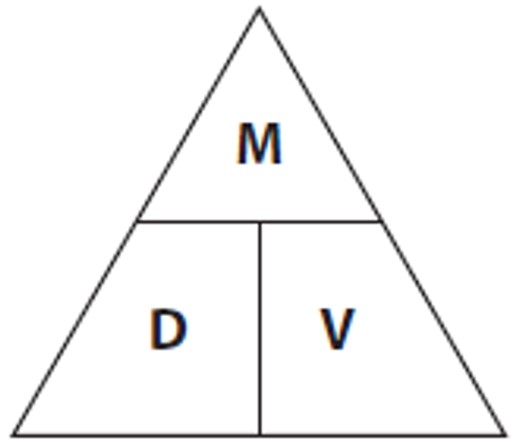
- Enter the variables D, M, and V so that the triangle resembles the shape of the equation as shown.
- You can now derive each of the variations of the key density formula visually:
- You can see that
 on the triangle because M is “over” D.
on the triangle because M is “over” D. - You can see that
 on the triangle because M is “over” V.
on the triangle because M is “over” V. - And
 because the top of the triangle is equal to the multiplication of D and V.
because the top of the triangle is equal to the multiplication of D and V.
Note that the triangle method can only be used on key equations that involve multiplication or division and only three variables.
Solve problems by following steps
Consider this problem:
A specialized gold-coloured casting has a mass of 425 grams. By using Archimedes’ water displacement method, the volume of the casting was found to be 48.0 cm3. Given the following densities, identify the metal.
- Gold: 19.3 g/mL
- Copper: 8.86 g/mL
- Bronze: 9.87 g/mL
Here are a few important steps you can use to better solve problems like this one:
- Read the problem carefully twice. One common reason students get answers wrong in tests is because they fail to read the question correctly.
- Identify the concepts needed. As you read through the problem there may appear to be a lot of confusing information. Do not get overwhelmed. Instead, try to notice the signposts that will help you identify which new concept is involved. For instance, the problem above mentions mass, volume, and density, so it must involve the density concept.
- Organize the knowns and unknown information.
- Once you have identified the relevant concept, use the key formula as a way to organize the given known and unknown information. Sometimes a diagram can help you see the information in the problem more clearly. In the example above you would use the symbols from the key density formula to organize the relevant given information:
- M = 425 g
- V = 48.0 cm3
- D = ? (Notice that you need to find the density here, so the given densities are simply a guide to your answer. Those densities are not relevant information until you find the actual density.)
- Make sure the units are consistent with the key formula. In this example, cm3 is equal to mL.
- Apply the variation of the key formula needed. For this problem that would be the key density equation itself:
 so in this case:
so in this case:- D = 425 g/48.0 cm3 and thus:
- D = 8.85 g/cm3 (note that cm3 are the same as mL)
By comparison with the given densities, the casting must be made of bronze.
- Check your answer. Does it seem reasonable? Did you check your calculations? Also check that the units of the answer are correct for that variable.
- Split harder problems into parts. Occasionally in harder problems there may be two different concepts involved or the same concept may be used twice. In such cases, split the problem into two smaller problems that apply one concept at a time.
Prepare for tests by doing a variety of problems
On a test you will face problems from each of the concepts you have learned. You may then find it quite challenging to decide which specific concept applies to which specific problem. This “sorting of problems” is a very common difficult faced by many students writing problem-solving tests. Here are some study strategies you can use to prepare effectively for problem-solving tests:
- List all the headings or classes of problems that will likely be on the exam/test.
- Solve a few typical exam-like problems from each concept. If you find yourself forgetting how to do a particular kind of problem, go back to its concept summary and make sure you know the information well. Also go step by step through the problem.
- Solve some different typical exam questions in mixed-up order (e.g., practice questions from different topics chosen randomly).
In a study of employers in the Province of British Columbia, “Nearly 70 per cent of surveyed employers said that skills requirements in their workplaces had increased over the past decade, and the same proportion said that they expect further increases in the next five to ten years” (Stuckey & Munro, 11).
Lifelong learning or continuous study is one of the nine essential skills recognized by the Government of Canada for success in the workplace. It is the process of continuing to learn throughout your career and lifespan. Employers value employees who are capable, self-directed learners, and rapid advances in digital technology and its use in the workplace mean that jobs are continually evolving. Your ability to learn new information on your own and acquire new skills is integral to staying current in your profession and meeting employer expectations.

Figure 1.4 Apprentice training.
As an apprentice, you will be required to return to a training institution for a number of years to complete all levels of your program. As an employee, you may also be required to take on additional certifications and acquire new information and skills sets in order to work on a job site. The study skills you have developed and continue to enhance throughout your life will greatly assist you with your lifelong learning objectives.
 Watch the video: Lifelong Learning (3 minutes)
Watch the video: Lifelong Learning (3 minutes)

A YouTube element has been excluded from this version of the text. You can view it online here: https://opentextbc.ca/tradescommoncoreb1/?p=35
 Now complete the Learning Task Self-Test.
Now complete the Learning Task Self-Test.
- Every person learns in the same way.
- True
- False
- Your abilities, background, and life experiences play a role in how you learn.
- True
- False
- Effective study skills are not essential to success in postsecondary education and lifelong learning.
- True
- False
- Effective study habits are learned, and through repetition they can become part of your daily routine.
- True
- False
- For each hour of time spent in class, how many minutes is it suggested that you spend studying?
- 30
- 45
- 60
- 90
- Why is it important to understand how your program will be delivered?
- It’s not important.
- It determines how your assignments will be submitted.
- It determines how much time you will need to spend on campus.
- It helps you to determine the most effective ways in which to study.
- Once you decide to enter a trades program, why is it important to make learning a priority?
- It proves a commitment to your future career goals.
- It ensures that you are committed to being successful in your program.
- It prompts you to reprioritize your activities while in school to ensure that you dedicate enough time to studying.
- All of the above
- Who is responsible for making accommodations for a learner with a documented disability?
- It is everyone’s responsibility to look after all accommodations.
- It is the school’s responsibility to look after all accommodations.
- It is the instructor’s responsibility to look after all accommodations.
- It is the learner’s responsibility to be proactive and get touch with the unit responsible for student support services.
- What is metacognition?
- A study skill
- A learning strategy
- A way of knowing how and what we do best
- The understanding and awareness of your own cognitive (mental) processes and how you learn
- Why is it important to develop a plan for study skills and time management prior to commencing your studies?
- To reduces stress
- To provide you with a course of action to follow that saves time
- To ensure you build in enough time to go out with friends on weekends
- All of the above
- Which of the following best describes a good studying environment?
- Good lighting and ventilation
- A proper desk or table and chair
- Sufficient space for you to spread out all of your study materials
- Blocking out distractions, allowing you to concentrate on reading and homework
- All of the above
- Good lighting and adequate heating/ventilation will improve your studying.
- True
- False
- What is the best way to keep track of assignments and tests?
- Ask friends to remind you.
- Put up a list on your locker door.
- Highlight the dates in your notebook.
- Use a smart phone application, calendar, agenda, or schedule.
- What do individuals who have trouble managing their time require so that they are most likely to succeed?
- More assistance from other people
- Less time to complete their studying
- More time to complete their studying
- The same amount of time to complete their studying
- Students with poor study skills often work in “crisis mode.”
- True
- False
- Studying with others is an example of active learning.
- True
- False
- What is the result of studying for a long period of time at the last minute?
- It reduces efficiency and increases stress and anxiety.
- It reduces the ability to understand and retain information.
- All of the above
- None of the above
- What is considered a desirable characteristic of a good study partner?
- Being focussed on learning
- Being just like you and easy to talk to
- Being someone you can hang out with before and after class
- Being a really good student who aces all of the exams and assignments
- Problem solving is central to trades training.
- True
- False
- Not all trades require numerical problem solving.
- True
- False
- What is the best way to get help with problem solving?
- Try to resolve all issues on your own before asking for help.
- Ask for help as soon as you run into difficulty and make use of the resources available to you (e.g., help centres, fellow students, and online resources).
- All of the above
- None of the above
- As long as you can memorize formulas and get the right answers to math problems, it really doesn’t matter if you understand the concept.
- True
- False
- Memorizing all formulas is crucial to problem solving.
- True
- False
- Which of the following best describes “continuous study”?
- It is needed for all individuals working in the trades.
- It is an essential skill and highly valued by employers.
- All of the above
- None of the above
- How much time should be spent on a problem before seeking help?
- 2 minutes
- 5 minutes
- 15 minutes
- 45 minutes
See the Answer Key in the back matter of the textbook for self-test answers.
Media Attributions

 Important: This icon highlights important information.
Important: This icon highlights important information. Poisonous: This icon is a reminder for a potentially toxic/poisonous situation.
Poisonous: This icon is a reminder for a potentially toxic/poisonous situation. Resources: The resource icon highlights any required or optional resources.
Resources: The resource icon highlights any required or optional resources. Flammable: This icon is a reminder for a potentially flammable situation.
Flammable: This icon is a reminder for a potentially flammable situation. Self-test: This icon reminds you to complete a self-test.
Self-test: This icon reminds you to complete a self-test. Explosive: This icon is a reminder for a possibly explosive situation.
Explosive: This icon is a reminder for a possibly explosive situation. Safety gear: The safety gear icon is an important reminder to use protective equipment.
Safety gear: The safety gear icon is an important reminder to use protective equipment. Electric shock: This icon is a reminder for potential electric shock.
Electric shock: This icon is a reminder for potential electric shock.








